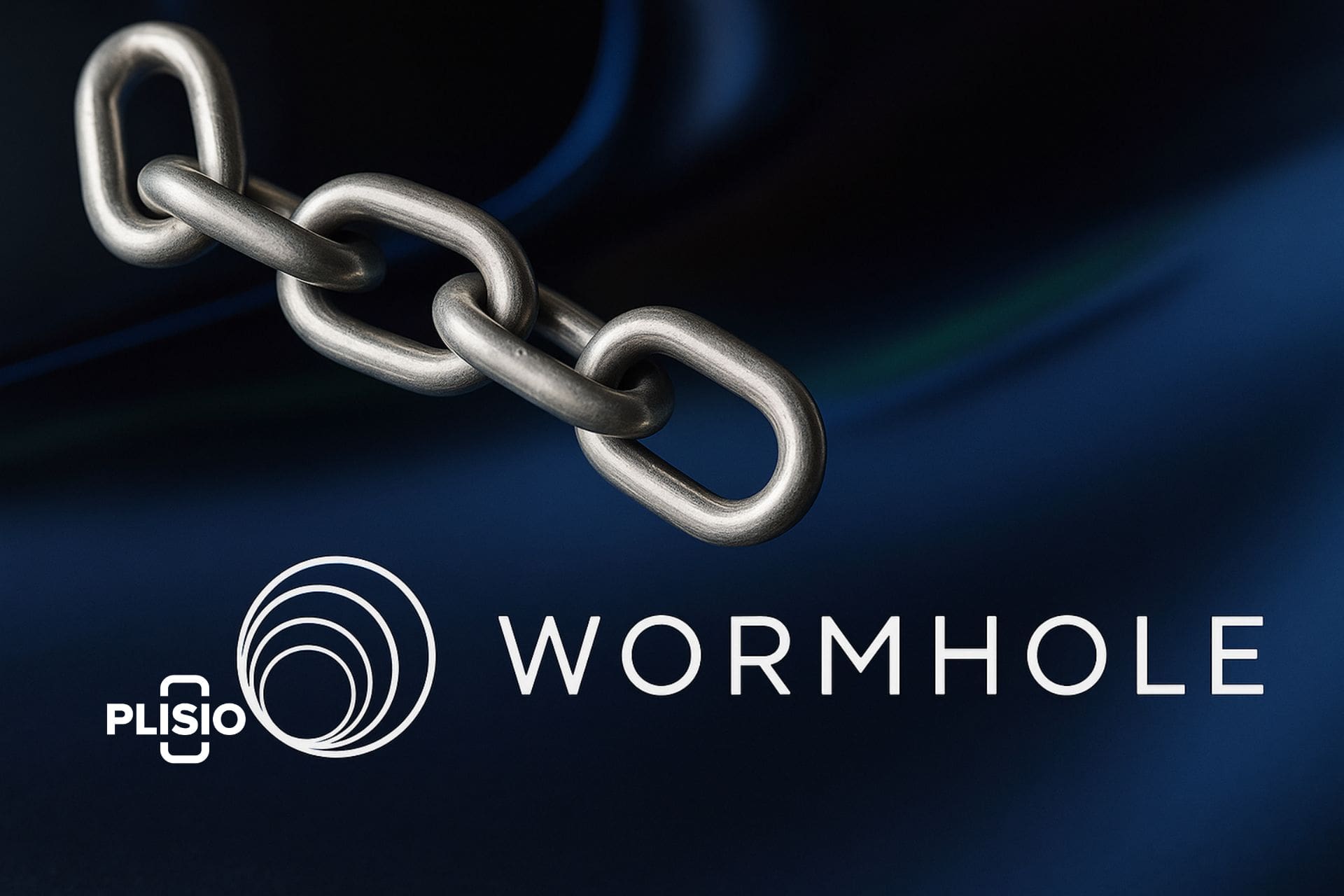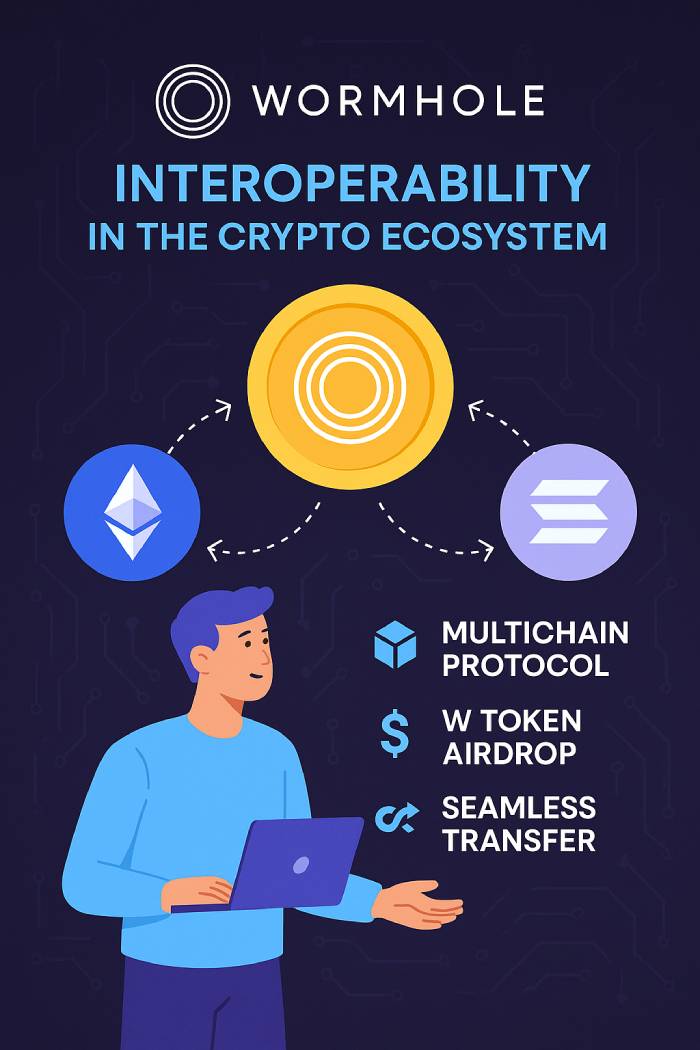Wormhole Crypto Review & Airdrop: A Complete 2025 Interoperability Guide

Wormhole has become one of the top interoperability protocols in the crypto business, along with Solana. The protocol is still getting a lot of attention in 2025, even after a highly anticipated airdrop in 2024. It processes more over 2.3 billion cross-chain communications and secures more than $12 billion in transferred liquidity across several blockchain ecosystems. This article goes into great detail about Wormhole crypto, the $W token, expert opinions, and how the airdrop affected the protocol's governance and tokenomics.
What is Wormhole Crypto?
Wormhole is a cross-chain technology that makes it easy to move data and assets between multiple blockchains without any problems. Wormhole is a digital bridge that lets users move tokens, NFTs, and on-chain messages across different blockchains, like Ethereum and Solana. This makes it one of the most crucial parts of the crypto space's infrastructure.
As of mid-2025, Wormhole stands integrated with more than 30 blockchain ecosystems and is leveraged by over 280 decentralized applications. Big names like Uniswap, Circle, Synthetix, and even ecosystem and incubation projects from Jump Crypto rely on the Wormhole network to facilitate native token transfers and cross-chain communication.
Expert insight: “Wormhole enables developers to create decentralized applications that can interact across multiple chains in ways that were impossible just a few years ago,” says Maria Chen, a blockchain researcher at Stanford. “It represents one of the leading interoperability protocols like Solana in the cryptocurrency market.”
How Does Wormhole Work?
At its core, Wormhole facilitates the transfer of data and digital assets across various blockchain networks. For example:
- A DeFi application on Ethereum can leverage Wormhole to seamlessly swap or transfer assets to Solana, taking advantage of lower fees and higher speed.
- NFT projects across different blockchains can use Wormhole’s interoperability for native token transfers and hold joint governance votes or action approvals within the Wormhole ecosystem.
This is made possible with Wormhole Connect, a developer tool that allows developers to create multichain applications without building a new token bridge. Wormhole serves not just as a bridge but as a protocol that facilitates state attestations, seamless transfers, and governance messages.

The Guardian Network Within the Wormhole Ecosystem
The protocol uses a Guardian network, which is a set of nodes that are not connected to each other, to check and confirm token transfers, digital assets, and messages flowing from one blockchain to another. The Guardian node network checks the transaction and starts the right smart contract on the receiving chain when assets and data are transported. Within the Wormhole ecosystem, this approach ensures secure cross-chain communication through wormhole queries.
Expert perspective: “The Guardian system is the backbone of Wormhole’s security model,” notes Andre Vasquez, CTO of a DeFi startup. “It’s what allows the Wormhole core contract to facilitate the transfer of assets seamlessly across different blockchain networks like Solana while maintaining trust.”
W Token: The Native Token of Wormhole
In April 2024, Wormhole's native token, $W, came out. It was designed as a governance and staking asset to help decentralize the Wormhole protocol. Token holders can suggest and vote on important improvements, like protocol upgrades and modifications to smart contract parameters.
The W token has a market cap of about $4.5 billion by August 2025. There are almost 1.9 billion tokens in circulation, which is less than the 10 billion tokens that Wormhole can make. This capped supply, together with unlock schedules that get longer over time, is a key part of Wormhole's multi-chain tokenomics.
Expert note: “Wormhole’s tokenomics experiment is unprecedented in the crypto market,” explains Clara Patel, an analyst at Messari. “By building governance across multiple blockchains, Wormhole represents the next phase of blockchain interoperability.”
Wormhole Token Use Cases
- Governance: Token holders propose and vote on changes that affect the Wormhole network's cross-chain bridge functionality.
- Staking: Validators and delegators within the Guardian network can stake W tokens to secure the protocol and earn rewards.
- Participation: As Wormhole continues to decentralize, W token holders will have increasing influence over decisions within the DAO (decentralized autonomous organization).
The Wormhole Airdrop in the Crypto Ecosystem
On April 3, 2024, Wormhole conducted one of the largest airdrops in the cryptocurrency market, distributing 617 million W tokens. This represented 6% of the total supply and was worth about $3 billion at launch.
Eligibility was based on interaction within the Wormhole ecosystem. Users who leveraged dApps, participated in on-chain activity across multiple blockchains, or engaged in the Wormhole community (including NFT communities and Discord) were rewarded. In total, over 10 billion tokens are available within the cryptocurrency market. 400,000 walletswere eligible.
The distribution included:
- 500 million tokens for on-chain activity and cross-chain communication.
- 117.3 million tokens for community members and contributors, including top stakers from projects like Pyth.
Expert takeaway: “The Wormhole airdrop wasn’t just another token distribution—it was a way to decentralize power within the Wormhole ecosystem,” argues Daniel Roberts of CryptoBriefing. “It gave governance to those who had already proven their commitment to the protocol.”
Why the Wormhole Airdrop Was Significant
The Wormhole airdrop was a big step forward for blockchain interoperability and showed off a protocol that makes it easier to move assets. It not only gave rewards to early adopters, but it also made it possible for separate chains to be governed. Wormhole let people create its multichain governance framework by giving power to token holders.
Wormhole’s Roadmap for the Interoperability Protocol
Looking ahead, Wormhole’s roadmap includes:
- Progressive decentralization: Control of the protocol continues to shift toward token holders within the DAO.
- Governance voting: By late 2025, large-scale governance proposals are expected to be voted on by the community.
- Expansion: Wormhole plans to integrate more than 10 new blockchain networks, strengthening its role as a leading interoperability platform.
- Security and audits: Continued bug bounty programs ensure the Wormhole core contract remains resilient in the crypto space.
Wormhole Airdrop Taxes and Tokenomics
The Wormhole airdrop, like other things that happen in the cryptocurrency market, has tax consequences. When you get airdropped tokens in the US, they are considered regular income. When you sell or transfer them later, you may have to pay capital gains or losses. With tools like Koinly, it's easier for people to figure out and record their taxes correctly.
Discover Wormhole Review: Wormhole is at the heart of blockchain integration. It provides an interoperability protocol that makes it easy to move assets and data between different blockchain ecosystems. Developers can make decentralized apps on the Wormhole network, users can transfer tokens across chains, and the community of token holders continues to shape the protocol's multichain governance. Wormhole crypto is one of the biggest cryptocurrency infrastructure initiatives, and it shows that blockchain interoperability is not only a dream, but a fact in 2025.

